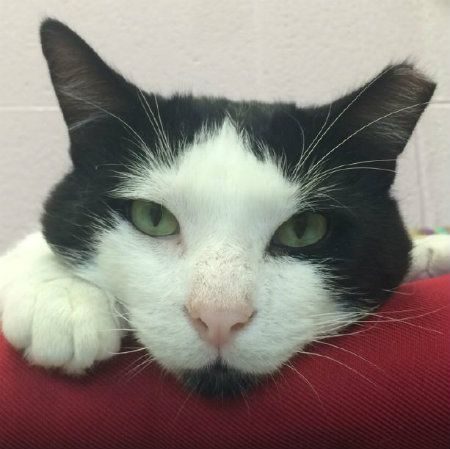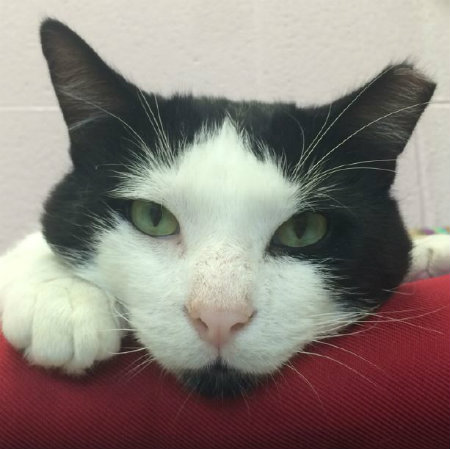

What is a Feral Cat?
Learn the difference between feral cats and abandoned cats, and how to help both.
Meet Lefty: The Story of a once Feral Cat
Where’s the rest of my left ear? Admit it, you were thinking it… I get it all the time. Well, my name is Lefty and I was living on the streets. A feral cat community caretaker found me at a feral cat colony and assumed I was feral too! They took me to the clinic to have me neutered so that I wouldn’t be part of the problem of unwanted kittens. After my TNR (trap, neuter, return) someone took a chance on me and figured out that I wasn’t feral at all – I was just an abandoned cat that still had lots of love for humans. My ear tip is my badge of courage for surviving life on the streets. If you see others that look like me (TNR cats all have their ears tipped) in your community you will know that we are part of a solution to the cat over-population problem.
—
Lefty’s outcome has been incredibly positive. He was in the care of Toronto Animal Services and has since been adopted into a wonderful forever home. Not all ear tipped cats can be expected to have the same story. For one, Lefty wasn’t feral whereas most ear tipped cats are. A feral cat is one that has not been socialized with humans and for that reason they maintain some degree of wild behaviour. Because they didn’t have contact with humans during the early part of their development they remain fearful of human contact and often cannot easily adjust to life as a domestic house living cat. Feral cats are often the result of strays that have not been spayed or neutered that have litters of kittens that then go on to become reproducing street cats in their own right. Once a feral cat has had a TNR they have the tip of their left ear removed so that community caretakers can easily identify them. This avoids spayed and neutered feral cats being re-trapped and undergoing unnecessary anesthetic and surgery.
Apart from feral cats, stray cats are those that have been abandoned by their owners and find themselves living on the streets. They are typically less wary of humans and can usually be adopted into a forever home if one is available and adjust quite well to domestic life. There is also usually a contingent of cats with homes that wander the neighborhood as outdoor cats. These are usually being cared for and are hopefully spayed or neutered, but of course you may not know for sure. These groups, feral, stray, and outdoor, are known under the umbrella term community cats.
Community cats are often cared for by one or more individuals in the community that leave them food. Sometimes a special site is set up where individuals will drop off cat food at regular intervals, usually once a day. In the winter cat shelters can be placed in this area to provide community cats with a warm refuge when the temperatures get extreme. Once community cats are feeding regularly at the site a TNR operation can be carried out which is the biggest step in reducing the number of street cats.
Stay tuned for Part 2 on how and why TNR works which will be posted next #FeralFriday.
Jenna Cheal, Ph.D. is an experimental psychologist who loves cats and analyzing cat behaviour. She uses her extensive background in understanding the causes of behaviour to provide simple solutions to a range of cat behaviour issues. Jenna (aka The Cat Psychologist) lives in Toronto, Ontario with her partner and two best cat-friends, Andes and Bolivar.
Follow me on twitter @CatPsychologist and ‘Like’ my page on facebook
Join the newsletter and never miss out on cat content again!
"*" indicates required fields
By clicking the arrow, you agree to our web Terms of Use and Privacy & Cookie Policy. Easy unsubscribe links are provided in every email.





